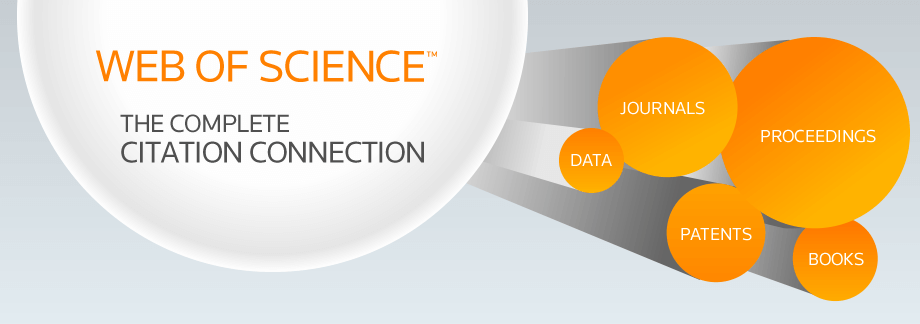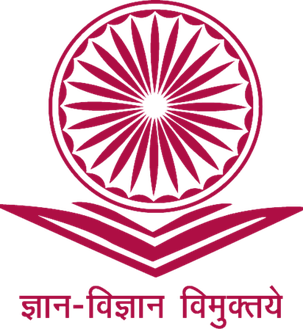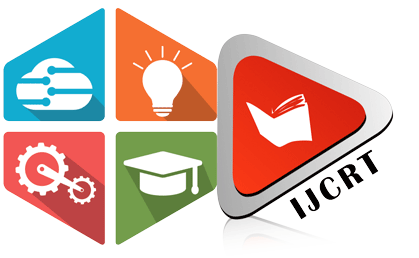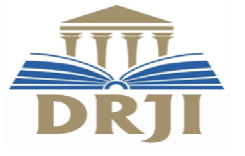INTERNATIONAL JOURNAL OF CREATIVE RESEARCH THOUGHTS - IJCRT (IJCRT.ORG)
International Peer Reviewed & Refereed Journals, Open Access Journal
IJCRT Peer-Reviewed (Refereed) Journal as Per New UGC Rules.
ISSN Approved Journal No: 2320-2882 | Impact factor: 7.97 | ESTD Year: 2013
Call For Paper - Volume 13 | Issue 11 | Month- November 2025
Scholarly open access journals, Peer-reviewed, and Refereed Journals, Impact factor 7.97 (Calculate by google scholar and Semantic Scholar | AI-Powered Research Tool) , Multidisciplinary, Monthly, Indexing in all major database & Metadata, Citation Generator, Digital Object Identifier(CrossRef DOI)
Contact Us Click Here
WhatsApp Contact Click Here
Volume 12 | Issue 5
| IJCRT Journal front page | IJCRT Journal Back Page |
Paper Title: THE IMPACT OF POROUS MEDIA COMBUSTION CHAMBERS ON DIESEL ENGINE PERFORMANCE AND EMISSIONS: A TECHNICAL ANALYSIS
Publisher Journal Name: IJCRT
Your Paper Publication Details:
Published Paper ID: - IJCRT2405364
Register Paper ID - 259928
Title: THE IMPACT OF POROUS MEDIA COMBUSTION CHAMBERS ON DIESEL ENGINE PERFORMANCE AND EMISSIONS: A TECHNICAL ANALYSIS
Author Name(s): Mr.Bhaveshkumar Variya, Mr.Narendra Dalia, Mr.Dharmang Patel
Publisher Journal name: IJCRT
Volume: 12
Issue: 5
Pages: d434-d440
Year: May 2024
Downloads: 130
Abstract
This paper provides an overview of porous media combustion techniques utilized in engines. A key objective of this review is to acquaint readers with the utilization of porous media in internal combustion engines. Porous Medium (PM) functioning as a heat reactor in diesel engines has emerged as a promising concept toward achieving near-zero emissions. Leveraging the geometric and material properties of PM, it enables homogeneous combustion, thereby substantially reducing emissions across various operational scenarios.
Licence: creative commons attribution 4.0
License
Keywords
Ceramic Porous Foam, Diesel Engine, Silicon Carbide (Sic), PM Chamber.
License
Paper Title: Smart Surveillance Solutions
Publisher Journal Name: IJCRT
Your Paper Publication Details:
Published Paper ID: - IJCRT2405363
Register Paper ID - 259833
Title: SMART SURVEILLANCE SOLUTIONS
Author Name(s): Darshan P, Sathvik I K, Manoj B Kulkarni, Lakshmisha R.A
Publisher Journal name: IJCRT
Volume: 12
Issue: 5
Pages: d427-d433
Year: May 2024
Downloads: 131
Abstract
The integration of advanced technological solutions into educational systems has ushered in a new era of efficiency and effectiveness. This paper delves into the fusion of Smart Attendance and Cutting-Edge Exam Surveillance, presenting a holistic approach to bolster academic administration and uphold examination integrity. Smart Attendance leverages facial recognition and biometric data to automate attendance tracking, ensuring precision and swiftness in the process. Conversely, Cutting-Edge Exam Surveillance harnesses artificial intelligence and machine learning to vigilantly monitor and deter cheating behaviors during examinations. The symbiosis between these two systems not only simplifies administrative duties but also guarantees a secure and equitable examination milieu. This paper examines the technical complexities, ethical implications, and potential ramifications of implementing these innovations in educational institutions. The convergence of Smart Attendance and Cutting-Edge Exam Surveillance marks a pivotal moment in educational management.
Licence: creative commons attribution 4.0
License
Keywords
Facial Recognition, Biometric Data, Artificial Intelligence, Machine Learning, Examination Integrity
License
Paper Title: FORMULATION AND EVALUATION OF FLOATING TABLET OF TAPENTADOL HYDROCLORIDE
Publisher Journal Name: IJCRT
Your Paper Publication Details:
Published Paper ID: - IJCRT2405362
Register Paper ID - 259827
Title: FORMULATION AND EVALUATION OF FLOATING TABLET OF TAPENTADOL HYDROCLORIDE
Author Name(s): Anand Chauhan, Maulik Mehta
Publisher Journal name: IJCRT
Volume: 12
Issue: 5
Pages: d400-d426
Year: May 2024
Downloads: 162
Abstract
The study aimed to develop sustained-release floating tablets of Tapentadol HCl utilizing a direct compression method with an effervescent approach. Poly ethylene Oxide (Polyox WSR 301, Polyox WSR 303, Polyox WSR 308) was chosen as the sustained-release polymer, while sodium bicarbonate served as the gas-generating agent. Preformulation study of API was performed using FTIR Spectroscopy. Drug excipient compatibility shows no interaction between drug and excipients. Trial batches initiated for screening of polymer. Prepared tablets were analyzed for various parameters like weight variation, hardness, thickness, friability, swelling and drug content, In-vitro drug release extended to 12 hours, with formulation T9 demonstrating 99% drug release, hence choosen for optimization using factorial design was done using DOE software. Factorial batches (F1-F9) with Polyox WSR 303, Sodium bicarbonate as Indipendent Variables showed significant outcomes. Factorial batch achieved desired drug release. Batch O1 was fine-tuned for drug release 99% over 12 hours and Floating Lag time 37 seconds. Higuchi's model fit best. The optimized batch O1 was subjected for Stability study and found stable for 1 month. Hence, O1 batch was the optimized batch.
Licence: creative commons attribution 4.0
License
Keywords
Tapentadol HCl, Polyox WSR 301, Polyox WSR 303, Polyox WSR 308, Sodium bicarbonate, Floating Tablets
License
Paper Title: Podcast Revolution: Transforming Social Media Conversations
Publisher Journal Name: IJCRT
Your Paper Publication Details:
Published Paper ID: - IJCRT2405361
Register Paper ID - 259828
Title: PODCAST REVOLUTION: TRANSFORMING SOCIAL MEDIA CONVERSATIONS
Author Name(s): Janhavi Patel, Prof.(Dr.) Dharmendra Kumar
Publisher Journal name: IJCRT
Volume: 12
Issue: 5
Pages: d379-d399
Year: May 2024
Downloads: 182
Abstract
Podcasts are changing the conversation on social media. By providing a venue for in-depth exploration, they promote a more vibrant and diverse online community. By enabling innovators from specialized groups to share their knowledge and challenge the dominance of mainstream voices, this "democratization of knowledge" The burgeoning podcasting landscape stimulates creativity in content production. By experimenting with formats, creators can investigate subjects that are not covered by mainstream media. They can concentrate on producing varied and high-quality content because of this flexibility and changing income methods. A greater variety of voices and viewpoints are advantageous to listeners, enhancing social media discussions. Because they are immersive, podcasts help listeners feel like they are part of a community. This closeness increases interest and initiates lengthy talks. Podcasts are revolutionizing social media by dismantling obstacles and creating new channels for connection. Because they are immersive, podcasts help listeners feel like they are part of a community. This closeness increases interest and initiates lengthy talks. Podcasts are making social media a livelier and more dynamic place for investigation, interaction, and discussion by dismantling boundaries and creating new channels for communication.
Licence: creative commons attribution 4.0
License
Keywords
podcasts, social media, democratization, diversity of voices, immersive experience
License
Paper Title: An Iot Based Gesture Recognition System For Patients
Publisher Journal Name: IJCRT
Your Paper Publication Details:
Published Paper ID: - IJCRT2405360
Register Paper ID - 259870
Title: AN IOT BASED GESTURE RECOGNITION SYSTEM FOR PATIENTS
Author Name(s): Sooryakrishna M K, Abhinav Kumar K K, Udayakrishnan K, Bivin A V, Shilja A S
Publisher Journal name: IJCRT
Volume: 12
Issue: 5
Pages: d365-d378
Year: May 2024
Downloads: 177
Abstract
This project presents a smart glove designed for real-time hand gesture recognition and emergency response. The glove incorporates five flex sensors to capture finger movements, an accelerometer to detect hand orientation, and an ESP32 microcontroller for processing sensor data. A display provides visual feedback, while an APR33A3 chip enables audio playback. Additionally, the glove integrates with a mobile application via Bluetooth connection, allowing for emergency notification blinking and remote control of appliances like lights and fans.This smart glove offers a novel solution for hands-free emergency response. By recognizing specific hand gestures, the glove can trigger pre-recorded emergency audio messages, send notifications to a connected mobile app, and even remotely control smart home devices, promoting increased safety and accessibility for users in need of assistance.
Licence: creative commons attribution 4.0
License
Keywords
Gesture Recognition, Flex sensors.
License
Paper Title: CAKRAMARDA (Cassia tora. Linn) - TRADITIONAL MEDICINAL PLANT A COMPREHENSIVE LITERARY REVIEW FROM AYURVEDIC LITERATURE
Publisher Journal Name: IJCRT
Your Paper Publication Details:
Published Paper ID: - IJCRT2405359
Register Paper ID - 259814
Title: CAKRAMARDA (CASSIA TORA. LINN) - TRADITIONAL MEDICINAL PLANT A COMPREHENSIVE LITERARY REVIEW FROM AYURVEDIC LITERATURE
Author Name(s): Dr G. Sai Sireesha, Dr. Renu Dixit, Dr. K.V.V. Bhaskara Reddy
Publisher Journal name: IJCRT
Volume: 12
Issue: 5
Pages: d356-d364
Year: May 2024
Downloads: 168
Abstract
The oldest documented knowledge in India is found in Vedas which is the Source of knowledge. The medicinal traces found in Rigveda, Atharvaveda gives more advance picture in number and variety of Drugs. Medicinal Plants play an important role in drug development, as these are the source of majority of ingredients in Ayurveda as well as Modern Medicine. The drug Cakramarda is one of the miraculous drug and most commonly available plant on road sides in all parts of India and other parts of the Country. Cakramarda, also known as "Cassia tora" or "Senna tora," is a plant with a history of traditional use in system of Ayurveda. It has diversified uses in various systems and most popular in treating skin diseases mostly as a result which it was named as Dadrughna in Samhitas and Puranas. As per annotations of Acaryas in samhitas - the Classical Ayurvedic Literature, Cakramarda is known as Cakragaja is a part of the Sami Dhanya varga which refers to the "Group of Legumes" also mentioned as part of the Saka varga (Group of Vegetables / Pot Herbs) and defined which are based on the Dietic value of the plant. It was extensively used in Curna pradeha and many important formulations externally and internally in various ailments. Apart from its therapeutic potential it has also got some cosmetic importance of Kanthikara and Varnya property. The present article gives the comprehensive literary review of all the classics.
Licence: creative commons attribution 4.0
License
Keywords
Cakramarda, Ayurvedic Literature, Literary review, Samhitas, Puranas, Nighantus
License
Paper Title: Bluetooth Operated River Cleaning Mechanism for Efficient Waterway Maintenance
Publisher Journal Name: IJCRT
Your Paper Publication Details:
Published Paper ID: - IJCRT2405358
Register Paper ID - 259540
Title: BLUETOOTH OPERATED RIVER CLEANING MECHANISM FOR EFFICIENT WATERWAY MAINTENANCE
Author Name(s): Rohit Yalmar, Rushikesh Bhagat, Ganesh Ghalme, Prof. H.S.Deshpande
Publisher Journal name: IJCRT
Volume: 12
Issue: 5
Pages: d351-d355
Year: May 2024
Downloads: 154
Abstract
Water pollution remains a significant environmental concern, particularly in rivers and waterways. This paper presents the design and development of a Bluetooth-operated River cleaning mechanism aimed at efficiently removing debris and pollutants from water bodies. The system utilizes innovative technology to enhance water quality and ecosystem health while minimizing human intervention.
Licence: creative commons attribution 4.0
License
Keywords
Keywords: Bluetooth, River cleaning, Water pollution, Mechanism, Environmental sustainability.
License
Paper Title: insolvency and bankruptcy code- CIRP
Publisher Journal Name: IJCRT
Your Paper Publication Details:
Published Paper ID: - IJCRT2405357
Register Paper ID - 259439
Title: INSOLVENCY AND BANKRUPTCY CODE- CIRP
Author Name(s): CHITRANSHI GUPTA
Publisher Journal name: IJCRT
Volume: 12
Issue: 5
Pages: d328-d350
Year: May 2024
Downloads: 179
Abstract
The Insolvency and Bankruptcy Code (IBC) has emerged as a transformative legislation in India, aiming to address the complex issues surrounding insolvency and bankruptcy proceedings. This paper provides a comprehensive analysis of the IBC, examining its implications, challenges, and potential solutions. The study begins by contextualizing the need for a robust insolvency framework, highlighting the shortcomings of the previous legal regime and the economic ramifications of ineffective insolvency resolution mechanisms. It then delves into the key provisions of the IBC, including its objectives, procedural framework, and institutional mechanisms. Drawing on empirical data and case studies, the paper evaluates the impact of the IBC on various stakeholders, including creditors, debtors, insolvency professionals, and the economy. It assesses the effectiveness of the IBC in expediting the resolution process, enhancing creditor recovery rates, and promoting a culture of financial discipline. Furthermore, the study identifies the challenges and bottlenecks encountered in the implementation of the IBC, such as delays in resolution, capacity constraints, and legal complexities. It explores potential strategies and policy interventions to address these challenges, including streamlining the resolution process, strengthening institutional capacity, and promoting alternative dispute resolution mechanisms. Finally, the paper concludes with recommendations for policymakers, practitioners, and stakeholders to further strengthen the insolvency framework in India and maximize its effectiveness in promoting economic growth, financial stability, and investor confidence
Licence: creative commons attribution 4.0
License
Paper Title: FORMULATION AND EVALUATION OF TRANSDERMAL PATCH FOR PAIN MANEGEMENT
Publisher Journal Name: IJCRT
Your Paper Publication Details:
Published Paper ID: - IJCRT2405356
Register Paper ID - 259755
Title: FORMULATION AND EVALUATION OF TRANSDERMAL PATCH FOR PAIN MANEGEMENT
Author Name(s): Thakur Pallav, Kumar Nishant, Ranjan Himanshu, Mamgain Shilpa
Publisher Journal name: IJCRT
Volume: 12
Issue: 5
Pages: d319-d327
Year: May 2024
Downloads: 194
Abstract
Pharmacotherapy is a major component of the multimodal comprehensive treatment of pain. The degree and kind of the patient's pain, together with their age and any other medical conditions, all influence how well an analgesic works, including how much is prescribed and how it is administered. This study aims to provide doctors, nurses, pharmacists, and other healthcare professionals who work with patients who are in pain with the most recent information on analgesics applied topically and transdermally. Analgesics applied topically or transdermally function via many pathways. Transdermal opioid administration causes the absorption of opioids into subcutaneous tissue vessels, which then transport the opioids on receptors (opioids) throughout the peripheral and central nervous systems via the blood. When administered topically, non-steroid anti-inflammation medications produce analgesic effect primarily by supplying local anti-inflammatory effects and high concentration in joints assembly. Drugs applied topically, such as creams containing antidepressants (doxepin, amitriptyline), capsaicin in cream, EMLA cream, lidocaine and capsaicin in patches, and capsaicin in cream, primarily operate nearby in tissue over receptors , ions channel. There are certain benefits to applying topical and transdermal analgesics as opposed to systemic medication. Since topical analgesics alleviate local pain with little to no systemic side effects, they have a far better adverse effect profile. In addition to the benefits listed above, the transdermal method offers a prolonged analgesic period and may be more suitable, epecially beneficial for patients who cannot ingest medications by oral route. Topical or transdermal opioids carry a lower risk of addiction compared to those administered orally or intravenously.
Licence: creative commons attribution 4.0
License
Keywords
pharmacotherapy, multimodal comprehensive treatment, pain management, analgesics, topical application, transdermal administration, opioid absorption, subcutaneous tissue vessels, opioid receptors, central nervous system, peripheral nervous system, non-steroidal anti-inflammatory drugs (NSAIDs), local anti-inflammatory effects, joint structures, antidepressants, capsaicin, EMLA cream, lidocaine, ion channels, systemic side effects.
License
Paper Title: ANTI SMUGGLING AND EARLY FIRE WARNING SYSTEM FOR FOREST TREES
Publisher Journal Name: IJCRT
Your Paper Publication Details:
Published Paper ID: - IJCRT2405355
Register Paper ID - 259598
Title: ANTI SMUGGLING AND EARLY FIRE WARNING SYSTEM FOR FOREST TREES
Author Name(s): VANKADARU SAI GAYATHRI, BHARATHGOWDA A S, NIZAMUDDIN VS, MANJUNATHA SIDDAPPA
Publisher Journal name: IJCRT
Volume: 12
Issue: 5
Pages: d314-d318
Year: May 2024
Downloads: 179
Abstract
The proposed system is all about smuggling of trees like sandal, red sandal, "sag wan" essential medicinal. These trees are very costly as well as less available in the world.
Licence: creative commons attribution 4.0
License
Keywords
Smart forestry systems,early fire detection, illegal logging prevention, anti smuggling measures, environmental monitoring, forest protection.
License
Paper Title: CRITICAL ANALYSIS OF ARTICLE 21 OF THE INDIAN CONSTITUTION (RIGHT TO LIFE AND PERSONAL LIBERTY)
Publisher Journal Name: IJCRT
Your Paper Publication Details:
Published Paper ID: - IJCRT2405354
Register Paper ID - 259805
Title: CRITICAL ANALYSIS OF ARTICLE 21 OF THE INDIAN CONSTITUTION (RIGHT TO LIFE AND PERSONAL LIBERTY)
Author Name(s): KANIKA
Publisher Journal name: IJCRT
Volume: 12
Issue: 5
Pages: d295-d313
Year: May 2024
Downloads: 260
Abstract
In every organized society, the rights as guaranteed by the established law to be measured as an individual is not guaranteed by meeting the needs of the animal alone. It is protected only if it is ensured and recognised by all the institutions to develop and does not have any barriers to its growth. All human rights ,which is earlier natural right, are meant to achieve the certain ends and for this purpose is essential to ensure certain elementary rights such as food, water, clean environment, education, health care ought to be reflects as the guaranteed provision by the established provisions of the constitutions of any civilised societies. This, infact, appears to requisite element for any human life to live such a dignified life. The term 'life' as employed by Article 21 does not merely replace the concept of physical existence with all the good values of life, including the right to earn a living and the right to live. This right can be a fundamental right bound to all people living in India, citizens and non-citizens alike. The right to life including the right to live and work as guaranteed by Article 21 is not reduced to a paper plate but is maintained, strong and vibrant so that the country can successfully adhere to the set policy of public debate as proposed by the founding fathers during the making of the Indian Constitution and its introduction. 'Protection of life and personal liberty' under Article 21 is also not limitless. Hence this research paper intends to analyse constitutional perspective towards the right to life and personal liberty and judicial approach there of.
Licence: creative commons attribution 4.0
License
Keywords
Article 21, Personal, Life, Liberty, Constitution.
License
Paper Title: Exploring the Impact of Socioeconomic Factors on Cybercrime Rate Prediction
Publisher Journal Name: IJCRT
Your Paper Publication Details:
Published Paper ID: - IJCRT2405353
Register Paper ID - 259620
Title: EXPLORING THE IMPACT OF SOCIOECONOMIC FACTORS ON CYBERCRIME RATE PREDICTION
Author Name(s): Deepak Yadav, Dr. Nitesh Kaushik, Nishant Soni, Ankit Saini, Sachin Mahawar
Publisher Journal name: IJCRT
Volume: 12
Issue: 5
Pages: d288-d294
Year: May 2024
Downloads: 136
Abstract
The continuous provision of services in organizations through the IoT (Internet of Things) has made it a new gateway for cyber-attacks. The risks of software piracy and malware attacks are high, which can lead to economic and reputational damages due to the theft of important information. Cybercrime is a growing concern in the cyber age, and classification methods like support vector machine (SVM) and K-nearest neighbour (KNN) are used to classify cybercrime data. Unsupervised classification methods include K-means clustering, Gaussian mixture model, and cluster quasi-random via fuzzy C-means and fuzzy clustering. Neural networks are used to determine synthetic identity theft. Cybercrime detection uses datasets from CBS open data StatLine, with personal characteristics of crime victims. Different training and testing data are analysed for performance. The best technique is used to identify criminals, and the Gaussian mixture model in the unsupervised method shows enhanced performance. The accuracy of the detection method is 76.56%, while the SVM classifier achieves 89% accuracy. Performance metrics include true positive, false positive, false negative, false alarm rate, detection rate, accuracy, recall, precision, specificity, sensitivity, and Fowlkes-Mallows scores. The expectation-maximization (EM) algorithm is used to assess the performance of the Gaussian mixture model. In this paper, we present a distributed framework based on deep learning that can detect and classify malicious traffic to ensure the security of IoT systems. We evaluate two different DL models, feed forward neural network and long short-term memory, using two different datasets (NSL-KDD and BoT-IoT) in terms of performance and identification of different kinds of attacks.
Licence: creative commons attribution 4.0
License
Keywords
Internet of Things, data mining, cyber security, software piracy, malware detection, Attack detection, Cyber-security, Deep learning, Distributed framework, Feed forward neural network, Long short-term memory, K-nearest neighbour, Cybercrime data, K-means clustering, Cyber age, CBS.
License
Paper Title: User-Centric Online Library System Using PHP
Publisher Journal Name: IJCRT
Your Paper Publication Details:
Published Paper ID: - IJCRT2405352
Register Paper ID - 259583
Title: USER-CENTRIC ONLINE LIBRARY SYSTEM USING PHP
Author Name(s): Ishaana Karmakar, Nidhi Kulkarni, Shrinivas Hunnur, Charudatta Bonde, Swati Rane
Publisher Journal name: IJCRT
Volume: 12
Issue: 5
Pages: d277-d287
Year: May 2024
Downloads: 136
Abstract
The increasing dependence on technology in the field of education is reshaping traditional learning paradigms at an unprecedented rate. With the proliferation of digital tools and platforms, educational institutions are embracing technology to enhance teaching methodologies, facilitate personalized learning experiences, and bridge accessibility gaps. Furthermore, the integration of educational apps, online resources, and collaborative platforms is fostering a more dynamic and engaging learning environment, catering to diverse learning styles and preferences. Libraries are invaluable resources for students, offering a diverse array of books, journals, and digital materials essential for research and academic growth and the integration of technology in education cannot be considered complete without it also influencing how the libraries are used. This project aims to collect a huge amount of data on the books in the library and bring it together on a platform that would enable the smooth and efficient management of the library.
Licence: creative commons attribution 4.0
License
Keywords
Integrated Library Systems, Database Management, Online Public Access Catalogs.
License
Paper Title: Deep Learning Object Detection Algorithm for Brain Tumor Identification and Categorization
Publisher Journal Name: IJCRT
Your Paper Publication Details:
Published Paper ID: - IJCRT2405351
Register Paper ID - 259599
Title: DEEP LEARNING OBJECT DETECTION ALGORITHM FOR BRAIN TUMOR IDENTIFICATION AND CATEGORIZATION
Author Name(s): Nitin Prajapati, Raj Gupta, Shivam Singh, Dr. Bhawesh K. Thakur
Publisher Journal name: IJCRT
Volume: 12
Issue: 5
Pages: d265-d276
Year: May 2024
Downloads: 147
Abstract
Brain tumors represent a significant global health challenge, affecting approximately one million individuals worldwide in 2023. This study evaluates the efficacy of the object detection algorithm for the detection and categorization of brain tumors using MRI images. The evaluation utilized a dataset of MRI images from different patients, covering three primary brain tumor types: Pituitary, Meningioma, and Glioma. The model demonstrated robust performance, with general high precision, recall, and mAP values on the validation dataset. Notably, the model effectively differentiated between the various brain tumor types and background, as evidenced by the normalized confusion matrix. Practical testing on brain MRI images confirmed the model's ability to accurately identify different tumor regions. In conclusion, the object detection algorithm presents a promising automated method for identifying brain tumors and classification in MRI images, potentially aiding clinicians in precise diagnosis and treatment planning. Further research using larger datasets is recommended to enhance the model's clinical applicability and reliability.
Licence: creative commons attribution 4.0
License
Keywords
brain tumor, object detection, MRI
License
Paper Title: Princely State
Publisher Journal Name: IJCRT
Your Paper Publication Details:
Published Paper ID: - IJCRT2405350
Register Paper ID - 259822
Title: PRINCELY STATE
Author Name(s): Vivek Rajput
Publisher Journal name: IJCRT
Volume: 12
Issue: 5
Pages: d258-d264
Year: May 2024
Downloads: 189
Abstract
Principles shaped a unique and diverse political landscape in pre-independence India, characterized by a mosaic of territories ruled by hereditary rulers known as maharajas, nawabs, rajas or sultans. These states retained varying degrees of autonomy and sovereignty under the supremacy of the British crown during colonial rule. The administrative structure of principalities varied considerably and included monarchical systems, councils of state, and decentralized administrative structures. Tax administration, legal systems and local administration were central features of princely state administration. The princely states played a crucial role in shaping the socio-political landscape of India and contributed to the rich tapestry of Indian history and culture. The integration of the princely states into independent India after partition in 1947 marked an important chapter in the nation-building process of the country, reflecting the complexity of the transition from princely to democratic rule. The study of princely states offers valuable insights into the dynamics of power, identity and governance in pre-colonial and colonial India.
Licence: creative commons attribution 4.0
License
Keywords
Aristocracy, Colonisation, Integration, Secessionism, Enclave, Accession, Principalities, Truce, Extravagance.
License
Paper Title: SMART ENVIRONMENT DATA MONITORING
Publisher Journal Name: IJCRT
Your Paper Publication Details:
Published Paper ID: - IJCRT2405349
Register Paper ID - 259803
Title: SMART ENVIRONMENT DATA MONITORING
Author Name(s): Mahalakshmi S, Priyanka R, Manusheya A, Mrs. Ramya G
Publisher Journal name: IJCRT
Volume: 12
Issue: 5
Pages: d249-d257
Year: May 2024
Downloads: 139
Abstract
The Integrated Environmental Monitoring System (IEMS) stands as a robust and multifaceted solution, meticulously designed to facilitate real-time data collection and analysis in the environmental domain. It integrates a diverse array of sensors including those for temperature, humidity, light (LDR), and pollution, all seamlessly interfaced with the Arduino Uno microcontroller, renowned for its reliability and versatility in embedded systems. This amalgamation of cutting-edge technology empowers the IEMS to provide a comprehensive and nuanced understanding of environmental conditions at any given moment. A pivotal aspect of the IEMS is its dual capability for data visualization. Locally, an LCD display serves as an intuitive interface, offering immediate access to real-time data for users on-site. Simultaneously, the system leverages an IoT module to transmit this wealth of information remotely, enabling stakeholders to monitor environmental parameters from anywhere in the world via a dedicated mobile application. This seamless integration of local and remote monitoring not only enhances accessibility but also promotes proactive decision-making and swift responses to emergent situations. Moreover, the IEMS is distinguished by its adaptability and responsiveness. Customizable alert mechanisms empower users to establish personalized thresholds for environmental parameters, ensuring that deviations from desired conditions prompt timely notifications. This proactive approach to monitoring enables swift intervention and mitigation, thereby mitigating risks and safeguarding against potential environmental hazards
Licence: creative commons attribution 4.0
License
Keywords
Integrated Environmental Monitoring System, real-time data collection, sensors, Arduino Uno, IoT module, LCD display, remote access, mobile app, customizable alerts, environmental safety, compliance.
License
Paper Title: "A Study on Insurance as an Investment Strategy"
Publisher Journal Name: IJCRT
Your Paper Publication Details:
Published Paper ID: - IJCRT2405348
Register Paper ID - 259782
Title: "A STUDY ON INSURANCE AS AN INVESTMENT STRATEGY"
Author Name(s): Brunda M
Publisher Journal name: IJCRT
Volume: 12
Issue: 5
Pages: d222-d248
Year: May 2024
Downloads: 185
Abstract
Basically Insurance is a legal agreement between two parties which involves the insurer and the insured. It is also known as insurance policy or coverage. Insurance is a kind of risk management plan to use an insurance policy as a hedge against an uncertain loss. Insurance provides protection against unforeseen risks, investments are aimed at growing wealth over time. The benefit of having insurance is that it prevents burning a hole into your pocket in unprecedented times. The goal of investing is to generate respectable profits. The essential elements of an ideal investment include returns, liquidity and a rational cost structure. Insurance, primarily conceived as a protective shield against unforeseen risks, has evolved to offer multifaceted financial risk mitigation. These insurance based investment products promise stability, tax advantages and long term financial planning benefits. The study embarks on a comprehensive examination of "Insurance as an Investment Strategy". In an ever-evolving financial landscape, the pursuit of investment strategies is paramount for individuals and the investors. In the dynamic environment of business and society Insurance not only serve as a cushion for uncertainty but acts as an investment opportunity as well. In the study, primary data was gathered through questionnaire and secondary data through websites, journals, articles and blogs. And the convenience sampling method is used to select the sample. The sample comprises of 30 respondents. For measuring the various phenomena and analyzing the collected data effectively and efficiently and to draw the sound conclusions, Chi-Square test method goodness of fit is used for hypothesis testing.
Licence: creative commons attribution 4.0
License
Keywords
Insurance, Investment, Liquidity, Risk Management, Tax Implications
License
Paper Title: IMHTA: A Novel Secured Approach For Fake Packet and Selective Packet Drops Attacks Mitigation by Improved Merkle Tree Approach in DTNs
Publisher Journal Name: IJCRT
Your Paper Publication Details:
Published Paper ID: - IJCRT2405347
Register Paper ID - 259628
Title: IMHTA: A NOVEL SECURED APPROACH FOR FAKE PACKET AND SELECTIVE PACKET DROPS ATTACKS MITIGATION BY IMPROVED MERKLE TREE APPROACH IN DTNS
Author Name(s): D. Kasi Viswanath, R. Lalasa, K. Pallavi, T. A. Bharadwaj, M. Pavan Kumar Reddy
Publisher Journal name: IJCRT
Volume: 12
Issue: 5
Pages: d215-d221
Year: May 2024
Downloads: 111
Abstract
Delay-Tolerant Networks (DTNs) are decentralized networks that operate without a fixed infrastructure. In DTNs, there is no continuous connection connecting devices, and nodes in the network are often disrupted. DTNs are a practical option for applications that experience sporadic connectivity, significant delays, frequent packet errors, and high rates of packet loss. This project analyses false packet and selective packet drops threats and discusses mitigation strategies for misbehaving nodes. In addition, an Improved Merkle Hash Tree Approach (IMHTA) is proposed to mitigate the malicious node. IMHTA uses a root hash with all packets to identify and counteract both sorts of attacks. A malicious node drops or injects bogus packets, and the algorithm detects it. Trace-driven simulations show that the proposed algorithm improves detection accuracy, packet delivery/loss ratios, and false-positive/false-negative rates compared to previous algorithms that only detect one type of attack or malicious paths rather than specific attacking nodes. Additionally, this work quantitatively analyses numerous circumstances to precisely track DTN vehicular node placements. The proposed technique detects and mitigates false packet and selective packet drops attacks, improving communication network security with intermittent connectivity and large delays.
Licence: creative commons attribution 4.0
License
Keywords
Delay Tolerant Networks; Merkle Hash Tree Approach; Network Security; Misbehaving nodes; Packet Drop attacks; Packet Delivery Ratio
License
Paper Title: Deep Fake Detection with Machine Learning using CNN and RESnet Algorithm
Publisher Journal Name: IJCRT
Your Paper Publication Details:
Published Paper ID: - IJCRT2405346
Register Paper ID - 259800
Title: DEEP FAKE DETECTION WITH MACHINE LEARNING USING CNN AND RESNET ALGORITHM
Author Name(s): J.Nithya, K.Kanishka, S.Selvasri, M.Sundaram
Publisher Journal name: IJCRT
Volume: 12
Issue: 5
Pages: d207-d214
Year: May 2024
Downloads: 140
Abstract
Video forgery is continuously increasing in the digital world due to breaches of information security, consequently establishing a scenario for image and video content monitoring for forgery identification. The spread of fake videos raises security risks and anarchy in society. The reason for video forgery is to the augmentation in the malware, which has facilitated user (anyone) to upload, download, or share objects online comprising audio, images, or video. With the development of technology and ease of creation of fake content, the manipulation of media is carried out on a large scale in recent times. Video forgery detection has applications in media science, forensic analysis, digital investigations, and authenticity verification of a video. The purpose of video forensic technology is to extract features to distinguish fake content frames from original videos. Deepfake media has posed a great threat to media integrity and is being produced and spread widely across social media platforms, the detection of which is seen to be a major challenge. Proposed, an approach for Deepfake detection has been provided for forgery detection in video. ResNet, a Convolutional Neural Network (CNN) algorithm is used as an approach to detect the Deepfake videos. The model aims to enhance the performance of detecting forgery videos produced by a certain method as well as enhance the accuracy of the detector. The proposed approach only uses the deep features extracted from the ResNet CNN model then applies the conventional mathematical approach on these features to find the forgery in the video. It is the detector to be constantly updated with real-world data, and propose an initial solution in hopes of solving Deepfake video detection.
Licence: creative commons attribution 4.0
License
Keywords
Deep Fake, CNN, RESnet, Forgery video detection
License
Paper Title: COMPARATIVE ANALYSIS OF THE STUDY HABITS AMONG SECONDARY SCHOOL STUDENTS
Publisher Journal Name: IJCRT
Your Paper Publication Details:
Published Paper ID: - IJCRT2405345
Register Paper ID - 259651
Title: COMPARATIVE ANALYSIS OF THE STUDY HABITS AMONG SECONDARY SCHOOL STUDENTS
Author Name(s): Pooja
Publisher Journal name: IJCRT
Volume: 12
Issue: 5
Pages: d201-d206
Year: May 2024
Downloads: 192
Abstract
This comparative study delves into the examination of study habits among secondary school students, particularly from government and private schools. Drawing on a survey conducted in Gurdaspur district, Punjab, India, the research aims to discern any notable distinctions in study habits between these two groups, as well as between male and female students. A sample of 150 students, evenly divided between government and private schools, participated in the study. The tool utilized for data collection was the Study Habits Inventory (PSSHI) by Palsane and Sharma. Statistical analyses including mean, standard deviation, and t-tests were employed to examine the data. The findings reveal significant differences in study habits between government and private school students, with the latter demonstrating superior study habits. Additionally, the study highlights a significant disparity in study habits between male and female secondary school students. These outcomes underscore the importance of recognizing and enhancing good study habits among students, as they are strongly associated with academic success. Recommendations are made for educators and parents to identify and foster effective study habits among students to promote their educational attainment.
Licence: creative commons attribution 4.0
License
Keywords
Study habits, Secondary school students, Government schools, Private schools, Comparative analysis, Gender differences, and Academic performance.
License
About IJCRT
The International Journal of Creative Research Thoughts (IJCRT) aims to explore advances in research pertaining to applied, theoretical and experimental Technological studies. The goal is to promote scientific information interchange between researchers, developers, engineers, students, and practitioners working in and around the world.
Indexing In Google Scholar, ResearcherID Thomson Reuters, Mendeley : reference manager, Academia.edu, arXiv.org, Research Gate, CiteSeerX, DocStoc, ISSUU, Scribd, and many more International Journal of Creative Research Thoughts (IJCRT) ISSN: 2320-2882 | Impact Factor: 7.97 | 7.97 impact factor and ISSN Approved. Provide DOI and Hard copy of Certificate. Low Open Access Processing Charges. 1500 INR for Indian author & 55$ for foreign International author. Call For Paper (Volume 13 | Issue 11 | Month- November 2025)
November 2025
Volume 13 | Issue 11
Last Date :
30-Nov-2025
Submit Manuscript Online Impact Factor: 7.97 Review Results : Within 02-03 Days Paper Publication : Within 02-03 Days

ISSN: 2320-2882 Impact Factor: 7.97 and ISSN APPROVED Journal Starting Year (ESTD) : 2013

ISSN: 2320-2882 Impact Factor: 7.97 and ISSN APPROVED Journal Starting Year (ESTD) : 2013

CONFERENCE PROPOSAL CONFERENCE PROCEEDINGS







































































